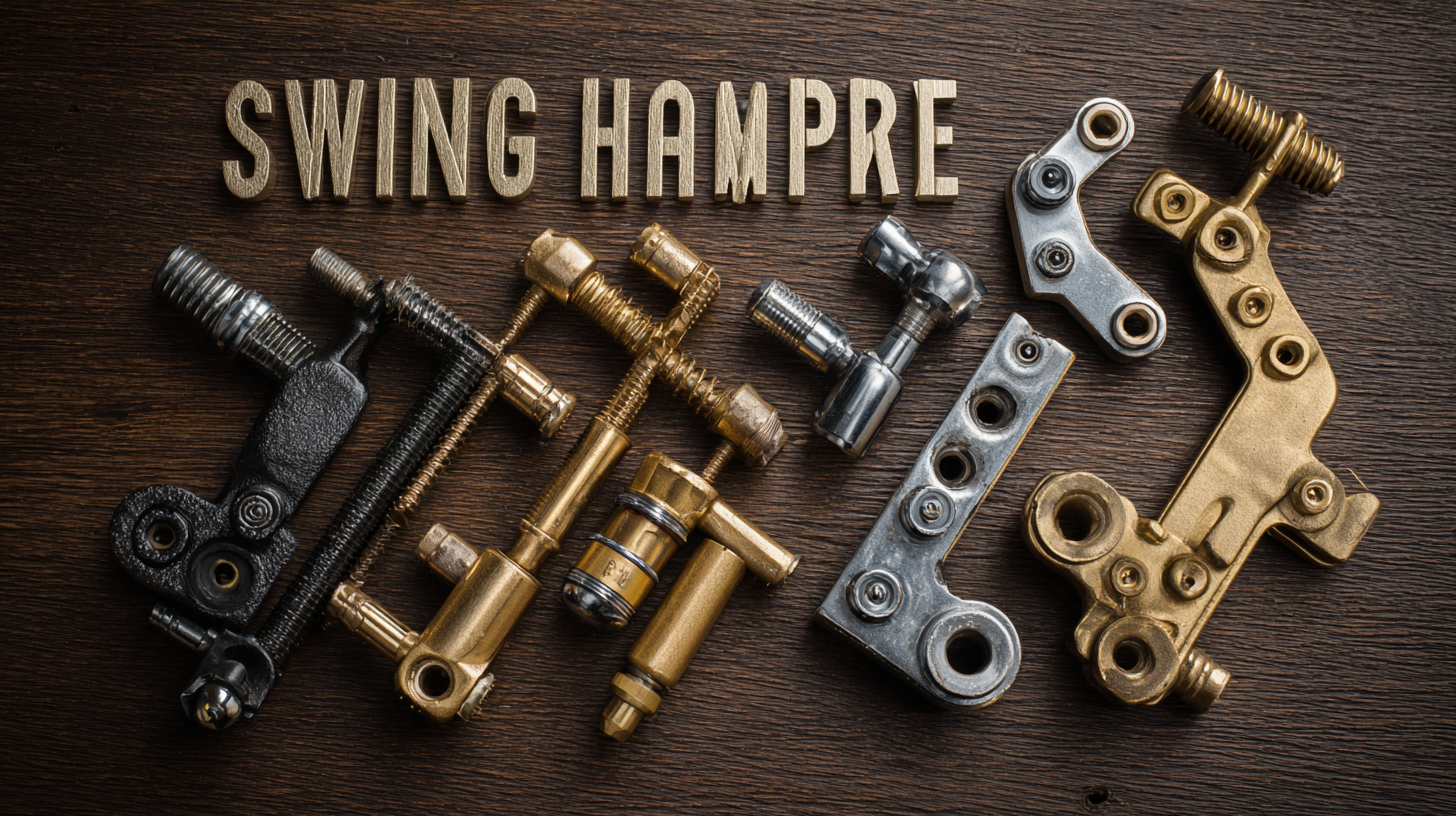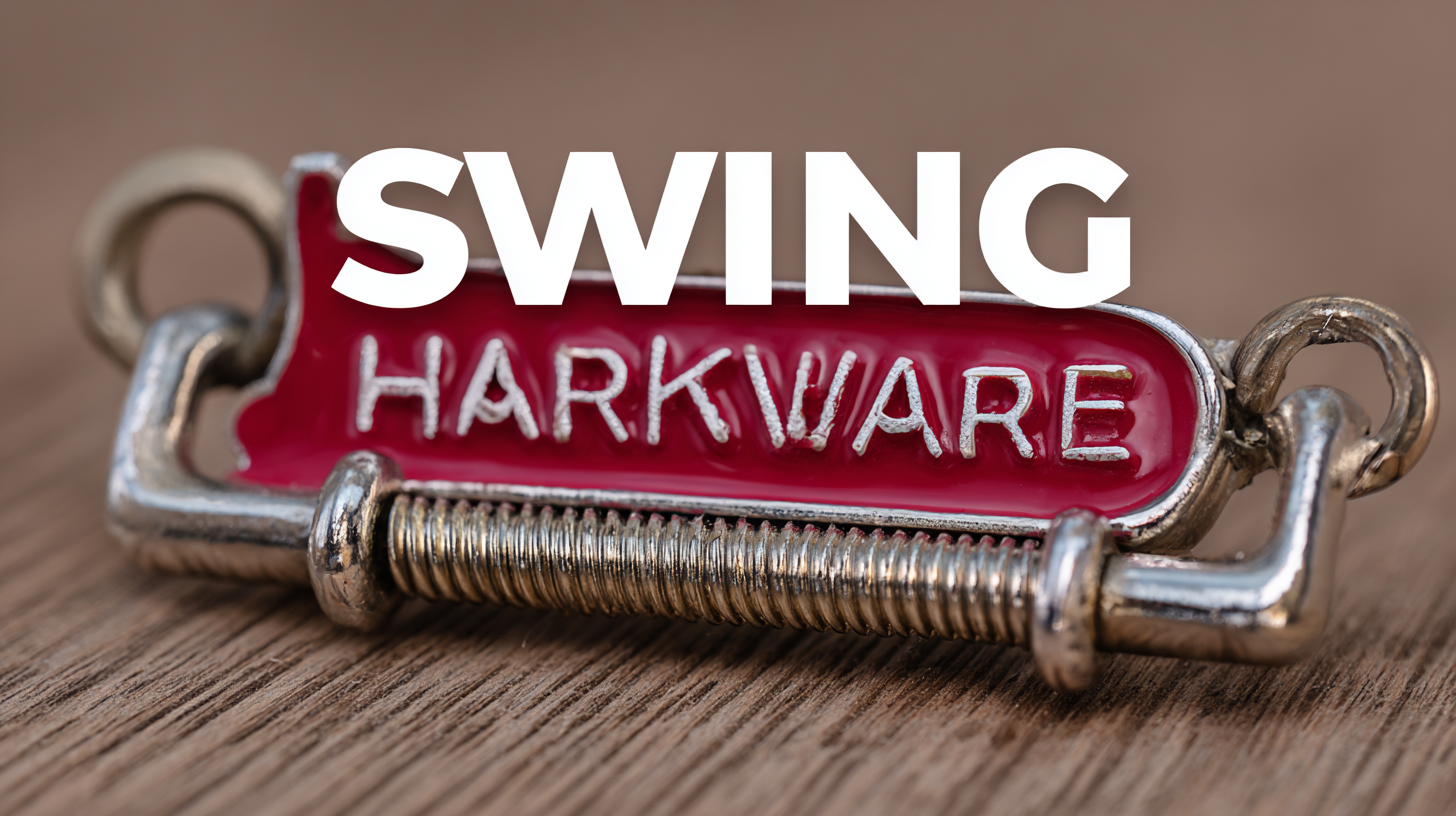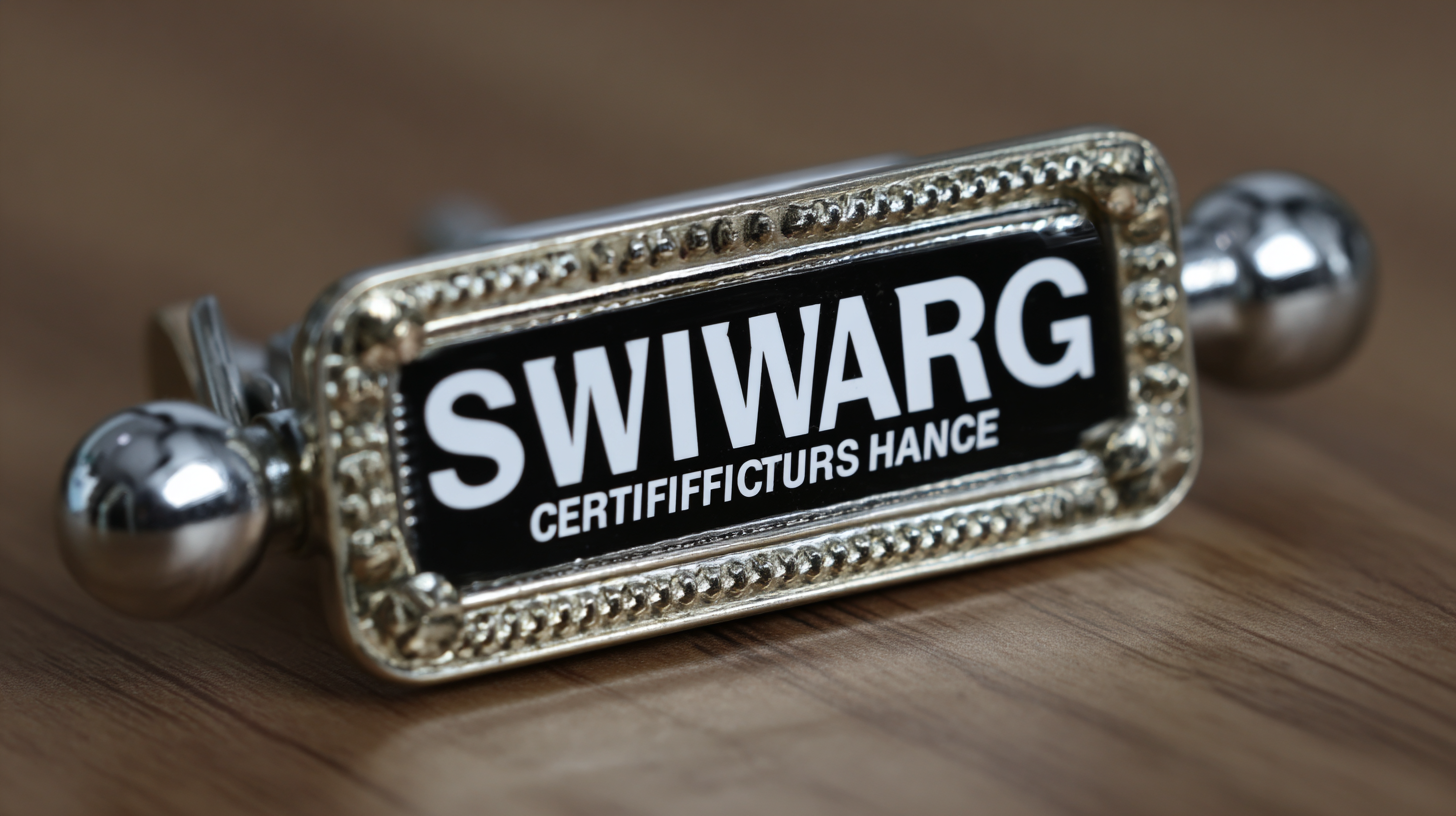
Navigating Import-Export Certifications for Best Swing Hardware: A Comprehensive Tutorial
In today's global marketplace, the significance of navigating import-export certifications cannot be overstated, especially when it comes to sourcing the best swing hardware. As businesses strive to enhance their product offerings, understanding the myriad of certifications required for swing hardware becomes essential. These certifications not only ensure compliance with international standards but also help in establishing credibility and trust with customers. From quality assurance to safety protocols, the benefits of these certifications extend beyond mere regulatory adherence; they serve as vital indicators of product reliability and performance.

This comprehensive tutorial aims to guide you through the complex landscape of import-export certifications specifically for swing hardware, highlighting their importance in facilitating successful trade and ultimately enhancing business growth. Whether you're a seasoned professional or new to the industry, mastering these certifications will empower you to make informed decisions and achieve a competitive edge in the market.
Understanding Import-Export Certifications: Key Terms and Definitions
When diving into the world of import-export certifications, it’s essential to grasp key terms and definitions that govern the landscape. Certifications such as ISO (International Organization for Standardization) reflect a commitment to quality and safety. Likewise, CE marking signifies compliance with European health and safety standards, which is crucial for markets in Europe. Understanding these terms helps businesses navigate regulatory requirements effectively.
Tip: Always stay updated on industry standards and regulations, as they can constantly evolve. This will not only ensure compliance but can also provide a competitive edge in global markets. Another important term is the Certificate of Origin, which verifies the country where goods are produced. This document is crucial for assessing tariffs and trade agreements.
Tip: Build strong relationships with your suppliers, as they often provide essential documentation that simplifies the certification process. Additionally, familiarize yourself with the specific certifications required for your swing hardware, as each market may have unique demands. By understanding these key terms and the importance of proper documentation, businesses can ensure smooth import-export operations and enhance their market reach.
Navigating Import-Export Certifications for Best Swing Hardware
Types of Swing Hardware and Their Certification Requirements
When it comes to swing hardware, understanding the various types and their certification requirements is crucial for import-export success. Swing hardware encompasses a range of products, including hinges, brackets, and locking mechanisms, each designed for specific applications. Manufacturers must ensure that their products comply with local and international certification standards, which often include safety, performance, and environmental considerations.
**Tips:** Always research the specific certification requirements relevant to your target market. This can differ significantly between regions; for instance, European standards may not apply in the U.S. Additionally, working closely with a knowledgeable certification consultant can streamline the process, ensuring that your products meet the necessary criteria before they reach consumers.
Another important factor is the documentation process. Providing accurate and complete documentation is essential for gaining certification and facilitating smoother customs clearance. Common documents include test reports, product specifications, and compliance statements. It’s wise to keep these organized and readily accessible to avoid delays during import-export transactions.
**Tips:** Regularly review and update your documentation as standards can change, impacting your certification status. Establish a routine check procedure to ensure compliance and maintain solid communication with your suppliers to stay informed about any updates in certification requirements.

Step-by-Step Guide to Acquiring Necessary Import-Export Certifications
When it comes to acquiring the necessary import-export certifications for swing hardware, it’s essential to understand the step-by-step process. Begin by identifying the specific certifications applicable to your products, which may vary based on your target market. For instance, exporting to countries like China requires navigating intricate regulatory systems to ensure the safety and quality of your hardware. Each market may have different documentation and compliance requirements that must be met.
Tip: Research the specific import-export regulations for each country. For exports to Great Britain, familiarize yourself with the Border Target Operating Model, which outlines safety and security controls applicable to all imports. Understanding the necessary commodity codes and documentary requirements will save you time and hassle.
Another key point is to stay updated on evolving regulations, such as those that may affect businesses trading with countries like Turkey. Engaging with local trade organizations can provide valuable insights and support in navigating these complex landscapes.
Tip: Attend workshops or webinars focused on import-export certifications and regulations. Networking with experts can offer practical advice and help clarify any uncertainties in the certification process, ensuring you stay compliant and competitive in the market.
Navigating Import-Export Certifications for Best Swing Hardware: A Comprehensive Tutorial
| Certification Type | Description | Required Documents | Processing Time | Applicable Regions |
|---|---|---|---|---|
| ISO 9001 | Quality Management System Certification | Quality Manual, Procedures, Audit Report | 2-6 Months | Global |
| CE Marking | European Compliance Certification | Technical Documentation, Test Reports | 1-3 Months | European Union |
| RoHS Directive | Restriction of Hazardous Substances Compliance | Declaration of Conformity, Test Reports | 1-2 Months | European Union |
| UL Certification | Product Safety Certification in North America | Application Form, Test Samples | 2-4 Months | United States, Canada |
| EN 14974 | Standard for Safety of Playground Equipment | Test Reports, Compliance Statements | 3-5 Months | European Union |
Common Challenges in Certification Process for Swing Hardware
Navigating the certification process for swing hardware can be riddled with pitfalls, making it essential for manufacturers and importers to understand common challenges. One significant hurdle is the ever-evolving regulatory landscape. Standards for safety and performance can vary widely by region, often leading to confusion and potential non-compliance if one is not thoroughly informed. Keeping up with the latest updates in regulations can be time-consuming, yet it is crucial for ensuring that products meet the necessary certifications before they hit the market.

Another frequent challenge lies in the documentation required for certification. Many businesses underestimate the amount of paperwork involved, which can include proof of product testing, quality assurance records, and compliance declarations. Inadequate or inaccurate documentation can result in delays or rejections from certification bodies. To mitigate these issues, companies must establish a well-organized documentation system and consider working closely with consultants who specialize in import-export certifications. By proactively addressing these challenges, businesses can streamline their certification process, reducing the risk of costly setbacks and ensuring their swing hardware meets the required standards.
Best Practices for Maintaining Compliance in Import-Export Certifications
When engaging in the import-export of swing hardware, maintaining compliance with certifications is crucial. One of the best practices is to familiarize yourself with the specific regulations governing your product category in both the importing and exporting countries. This involves researching the necessary certifications, such as safety standards and quality assurance marks, that your swing hardware must meet. Regularly consult resources provided by trade organizations and government authorities to stay updated on any changes in policies that could impact your operations.
In addition to understanding the local regulations, implementing a robust documentation system is essential. Keep meticulous records of all transactions, including invoices, shipping documents, and certification details. This practice not only simplifies the compliance process during audits but also helps in quickly addressing any issues that may arise. Moreover, training your team on the importance of compliance can foster a culture of diligence and accountability, ensuring that everyone understands their role in upholding your business's standards in import-export operations.